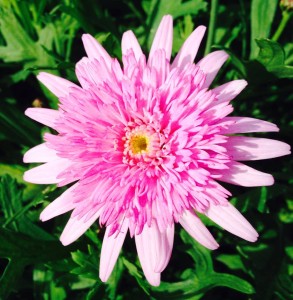By Fabiola (Plot 232)
At the beginning of July I attended a talk about grafting fruit trees.
It was held at Vasili’s Garden Centre in Coburg.
The speaker was Craig Castree, a very affable knowledgeable horticulturalist.
Grafting of trees is an enormous subject so, in the end lots of questions were asked about all sorts of gardening matters and a very pleasant morning was spent with a like minded mixed bag of gardeners of all ages and backgrounds.
Here are some of the pearls of wisdom I’ve collected about keeping a nice garden:
- Do not waste one single centimeter of fence, espalier all your fruit trees, even make normal height fences with them and share the produce with your neighbours. (Note that if you want to plant anything at the garden fence, please ask committee first.)
The traditional vase shaped tree is almost a thing of the past since backyards are getting smaller. - Prune trees to where you can reach with out having to climb on stools or ladders, it will be much easier to collect your produce and net them to keep all ‘peskies’ out.
- Best way for netting is making a poly pipe frame secured into the ground with star pickets, then you drape your net over it. (You can see the frame at Plot 223, no net at the moment.)
- Start lateral branches 2 feet (about 60cm) off the ground to maximize production.
- It is best for Australian conditions to prune twice a year, the once a year pruning was favored by our early European settlers used to gardening mostly in the northern hemisphere.
- Anything vertical, doesn’t grow fruit, lateral growth does.
- Stone fruit and citrus are best grafted in early summer. Pears and apples in winter.
- It is possible to graft 10 varieties onto one apple tree!, so you could be picking fruit for over 4 months of the year.
- Eureka lemons make excellent trees for grafting, they’re strong and vigorous, oranges , mandarins, tangelos etc can be happily grafted onto them. You will end up with a variety of yummy produce instead of an oversupply of lemons.
- Dolomite lime gives calcium to the soil, while lime increases the PH.
Many of you more experienced folks might already know most of this but if you are like me, a new comer into the fascinating gardening world , hope you get one or two of these tips useful for your ongoing happy plot tinkering !
(Please remember that tall tree/shrub that shade the neighbouring plot is not permitted but it sis good to have a fruit tree at home.)

